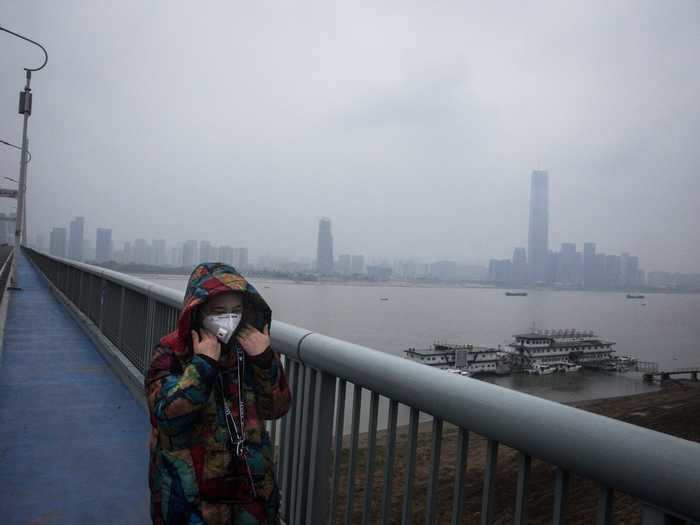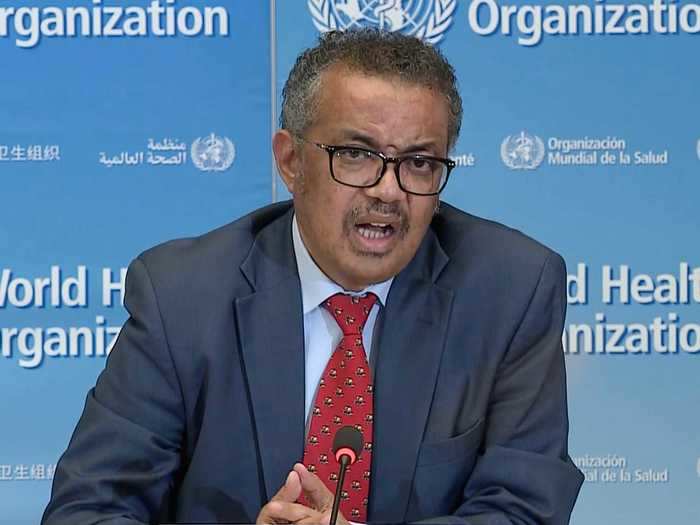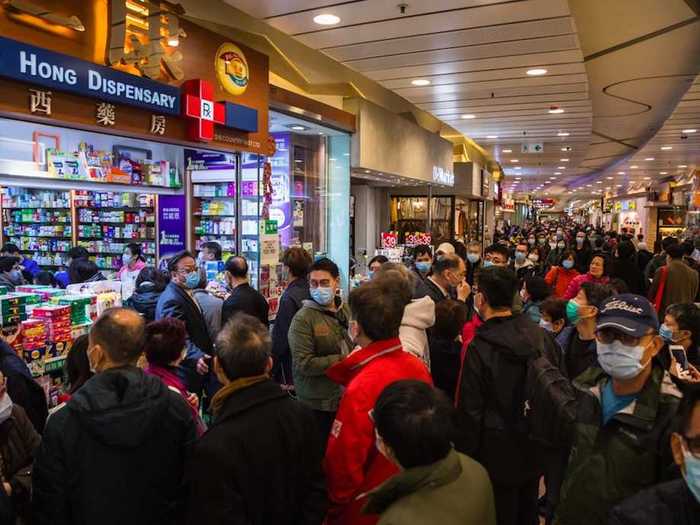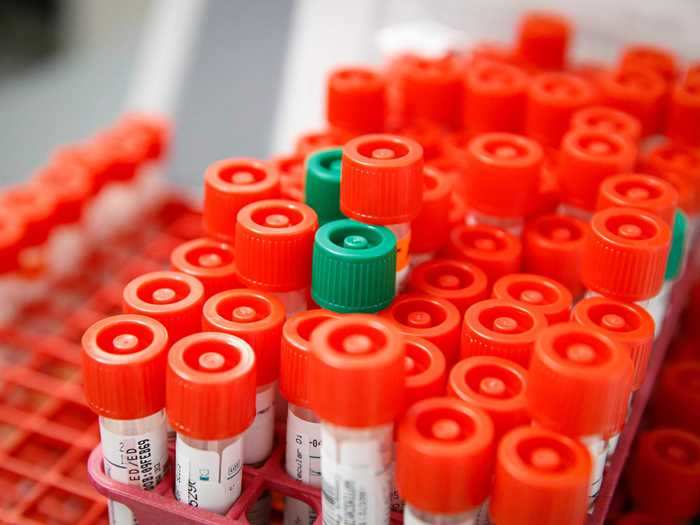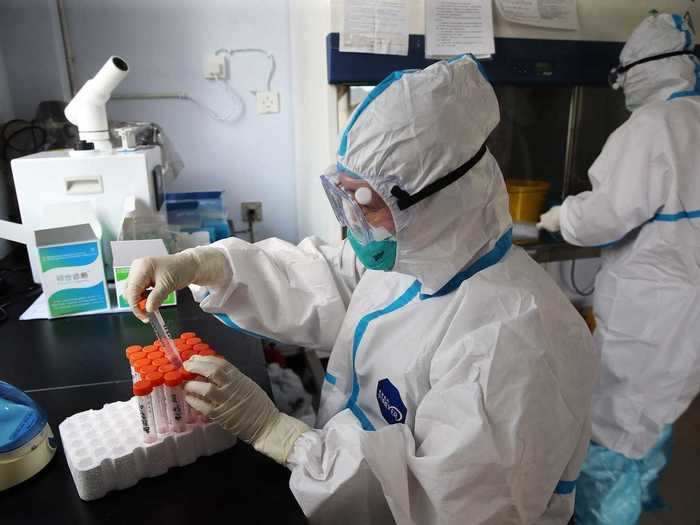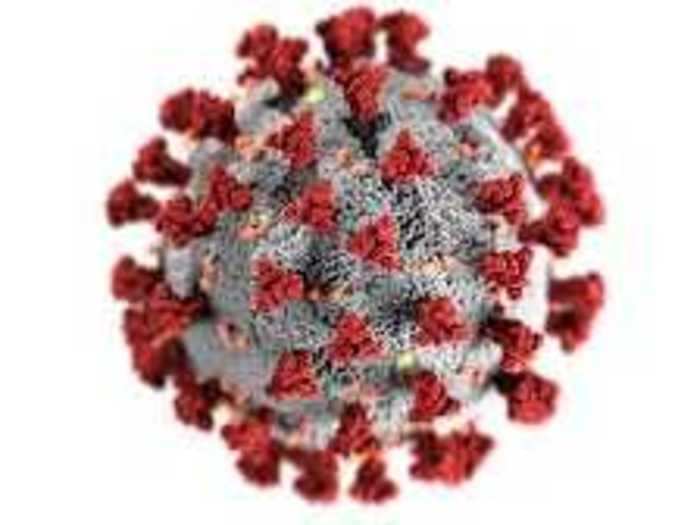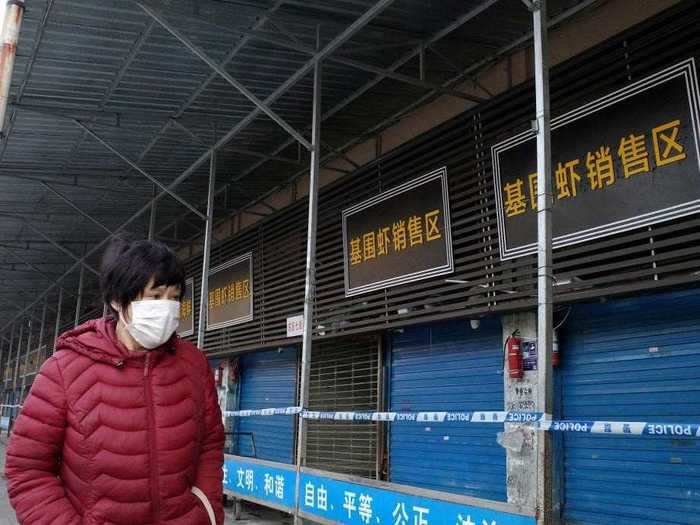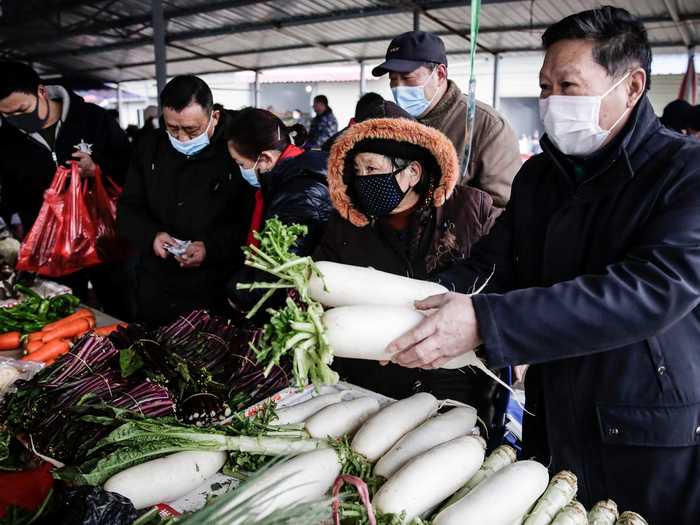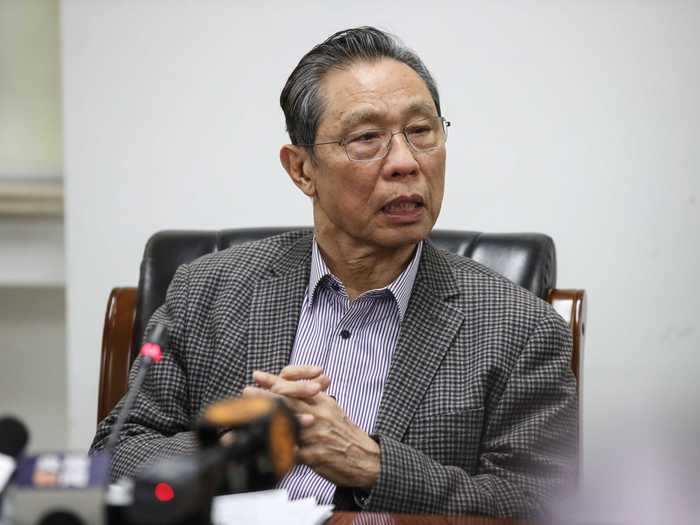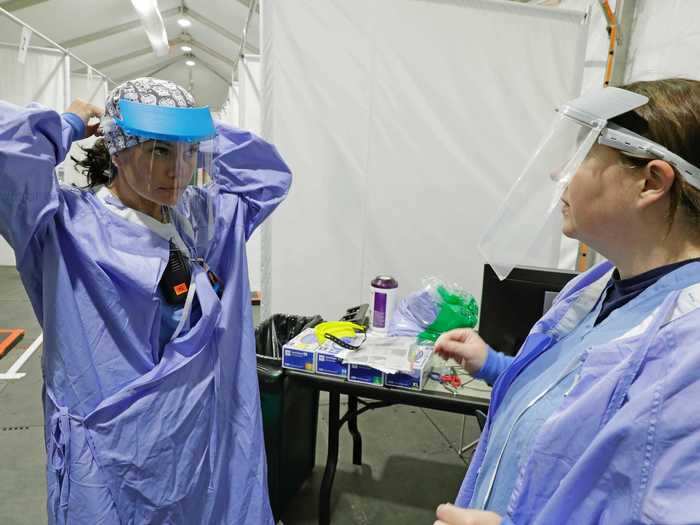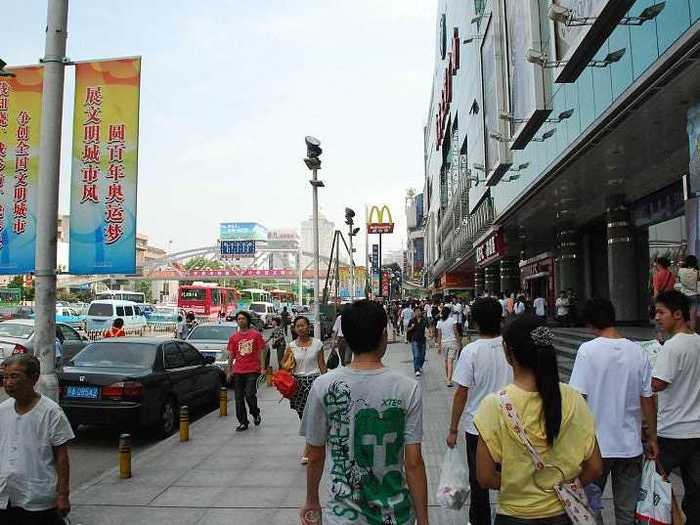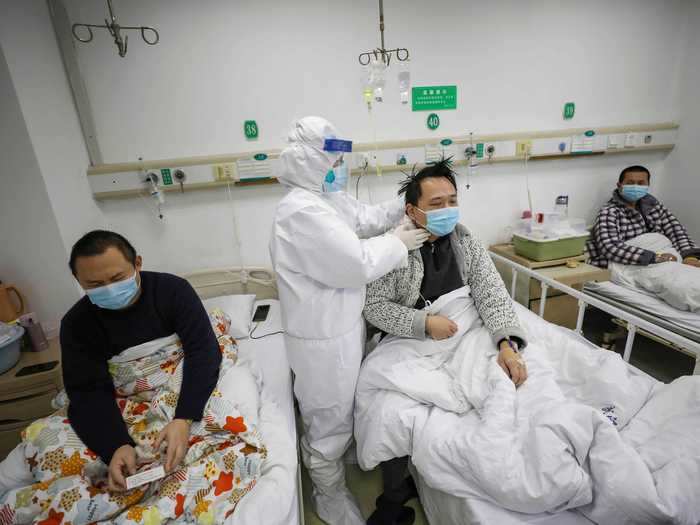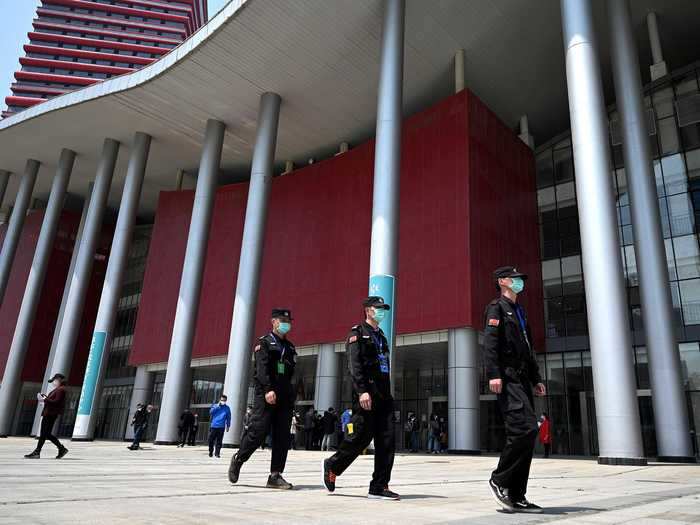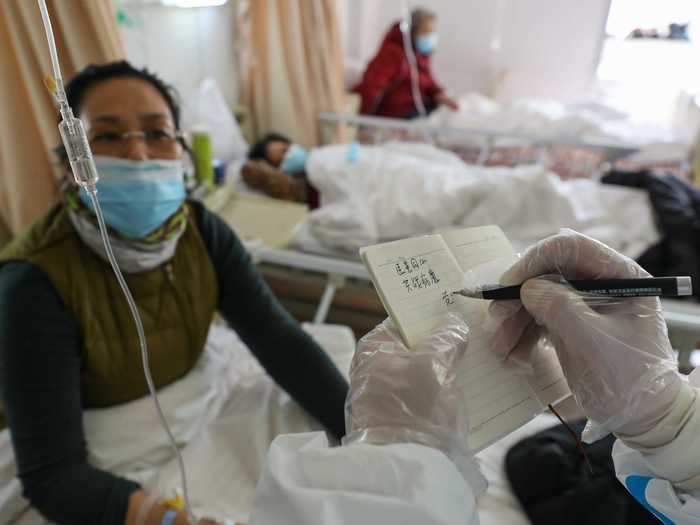A Chinese police officer in front of the portrait of Nationalist founder Sun Yat-sen at Tiananmen Square in Beijing, China, on April 28, 2020.Lintao Zhang/Getty Images
- China delayed the release of critical information about its coronavirus outbreak, a new AP investigation revealed.
- Chinese authorities took several days to alert the World Health Organization about an initial cluster of cases and waited more than a week before releasing the virus' genome to the public.
- That likely stalled the development of vaccines, drugs, and diagnostic tests.
When China reported the emergency of a new coronavirus to the World Health Organization on January 3, it at first seemed to be rectifying mistakes made during the SARS outbreak in 2003.
Back then, it took Chinese officials three months to notify the WHO about a "strange contagious disease" that by that point already killed 100 people. This time, Chinese officials claimed to have quickly identified the virus, sequenced its genome, and shared that information with the world.
"The Chinese government is to be congratulated for the extraordinary measures it has taken to contain the outbreak," Tedros Ghebreyesus, the WHO Director-General, said at a press conference on January 30. "In many ways, China is actually setting a new standard for outbreak response."
But a new investigation from the Associated Press revealed that China delayed the release of critical information, including the discovery of the initial outbreak and the country's first death, for several days. China also took more than a week to release virus' genome to the public. Those actions likely stalled the development of vaccines, drugs, and diagnostic tests.
A January recording obtained by the AP shows that Michael Ryan, executive director the WHO's Health Emergencies Program, compared China's response to its handling of SARS.
"This is exactly the same scenario, endlessly trying to get updates from China about what was going on," Ryan said to colleagues, according to the AP. "WHO barely got out of that one with its neck intact given the issues that arose around transparency in southern China."
Here's what we know about the actual timeline of the outbreak's beginning, and how that compares to China's account.
Authorities in Wuhan reported more than 40 cases of an unknown, pneumonia-like illness to the World Health Organization on January 3.
A woman wearing a protective mask walks across the Yangtze River Bridge in Wuhan, China, on January 27, 2020.
Getty Images
But Wuhan health officials had sent an emergency notice to hospitals four days earlier, on December 30.
The notice, which leaked on social media, asked doctors to report unusual cases of pneumonia. On December 31, the Wuhan Municipal Health Commission reported 27 cases of pneumonia with an unknown cause on its website.
Chinese ophthalmologist Li Wenliang also warned fellow doctors about a possible disease outbreak resembling SARS on December 30.
Dr. Li Wenliang.
AP Photo
A few days later, Chinese officials summoned Li to the Public Security Bureau in Wuhan. He was detained for "publishing untrue statements on the internet" and forced to sign a statement saying that he had "seriously disrupted the social order."
Li later contracted the coronavirus himself. He died on February 7 at age 33.
The WHO first learned about the virus through an open-source platform on December 31, the AP reported.
WHO Director General Tedros Adhanom Ghebreyesus during a news briefing on COVID-19 from WHO headquarters in Geneva on April 6, 2020.
AFP via Getty Images
The organization requested more information from China on January 1. Chinese authorities responded 48 hours later.
"It's obvious that we could have saved more lives and avoided many, many deaths if China and the WHO had acted faster," Ali Mokdad, a professor at the Institute for Health Metrics and Evaluation at the University of Washington, told the AP.
Research suggests the first coronavirus patient may have been exposed on December 1, more than a month before Chinese authorities publicly confirmed a case.
A suspected coronavirus patient fills out a form at a community health station before being transferred to a hospital in Wuhan on January 27, 2020.
Feature China/Barcroft Media/Getty Images
The virus was likely spreading in the Wuhan community by early January.
A crowd in Wuhan.
Getty
Chinese authorities announced that the illness in question was a new coronavirus on January 9.
Xu Jianguo, a member of the Chinese Academy of Engineering, told China's CCTV news station that the coronavirus had been identified as novel in a laboratory on January 7.
It took until January 12 for Chinese labs to publish the coronavirus' genome. But it had been sequenced more than a week before that.
A laboratory technician prepares COVID-19 patient samples for semi-automatic testing at Northwell Health Labs in Lake Success, New York, on March 11, 2020.
AP Photo/John Minchillo
Three labs — the Chinese CDC, the Wuhan Institute of Virology, and the Chinese Academy of Medical Sciences — formally published the genome on GISAID, a scientific platform.
The Wuhan Institute of Virology, part of the Chinese Academy of Sciences, had decoded the full sequence by January 2.
The Chinese Academy of Sciences.
http://english.ihb.cas.cn/au/
The institute identified the genome just three days after learning about the mysterious illness.
But on January 3 — the same day that the Chinese CDC sequenced the virus on its own — the Chinese National Health Commission ordered labs with the virus to either destroy their samples or send them to specific institutes for safekeeping, according to a notice obtained by the AP.
That meant labs couldn't publish their findings without government authorization.
At a briefing on May 15, Liu Dengfeng, an official with the National Health Commission's science and education department, said the samples were destroyed for "biosafety reasons."
Another Chinese lab had sequenced most of the genome by December 27, nearly two weeks before the sequence was formally published.
A laboratory physician at the Centers for Disease Control and Prevention prepares to perform nucleic acid testing on a novel coronavirus specimen in Chongqing, China, on May 3, 2020.
Costfoto/Barcroft Media via Getty Images
The lab, Vision Medicals, shared a partial genetic sequence with Wuhan officials and the Chinese Academy of Medical Sciences on December 27, the Chinese publication Caixin reported.
Chinese officials only agreed to share the genome with the WHO after a Chinese laboratory uploaded the sequence to a virology website.
An illustration of the SARS-CoV-2, which causes the disease COVID-19.
CDC
The Shanghai Public Health Clinical Center sequenced the genome on January 5, from a sample from a 41-year-old man who was admitted to a Wuhan hospital on December 26. The center reported its discovery to China's National Health Commission.
After waiting six days, the center published the 30,000-nucleotide sequence on a virology website in order to enable other scientists to develop a diagnostic test. That move angered Chinese CDC officials, three people familiar with the matter told the AP.
Hours after the genome went public, the Chinese National Health Commission said it would share the sequence with the WHO.
Still, the Shanghai Health Commission ordered the center to close on January 12. More than a month later, the center told the South China Morning Post that it had submitted four requests to reopen, but had not received a response.
Wuhan health authorities linked the first cluster of cases to the Huanan Wholesale Seafood Market, but evidence now shows that wasn't the outbreak's true origin point.
The Huanan Wholesale Seafood Market on January 12, 2020.
NOEL CELIS/AFP via Getty Images
In their first public mention of the virus on December 31, the Wuhan Municipal Health Commission pointed to the market as the origin site. Officials shuttered the market on January 1.
Researchers found evidence in January that the market wasn't the place where the virus first jumped to people. But Chinese officials didn't acknowledge that until May.
A market in Wuhan.
Stringer/Getty Images
The Lancet study determined in January that 13 of the first 41 cases in Wuhan had no connection to the Huanan market.
Among the first 425 coronavirus patients identified, only 55% of infections that occurred before January 1 were traced to the wet market, according to a March study in the New England Journal of Medicine.
Gao Fu, director of the Chinese Center for Disease Control and Prevention, recently told state media that samples from the wet market showed no link between the animals sold there and the coronavirus.
It took until January 20 for China's health ministry to warn the world that the virus could spread person-to-person. But scientists there knew that was the case weeks earlier.
STR/AFP via Getty Images
Zhong Nanshan, an infectious-disease doctor working with the Chinese government, confirmed that two cases in China's Guangdong Province were the result of human-to-human transmission on January 20. Until then, experts and the public weren't sure how it spread or whether people could pass it to one another.
That same day, the WHO said there was no evidence of significant transmission between humans.
But virologist Zhang Yongzhen warned China's National Health Commission that the virus "should be contagious through respiratory passages" as early as January 5.
Nurses at Harborview Medical Center in Seattle demonstrate how they wear medical face shields.
Ted S. Warren/AP
Zhang helped sequence the virus at the Shanghai Public Clinical Health Center.
In an internal notice obtained by the AP, the center told the National Health Commission it recommended "taking preventative measures in public areas."
Research shows that human-to-human transmission likely occurred as early as mid-December.
A street in Wuhan.
toehk at http://www.flickr.com/photos/toehk/2831901873/
Wuhan reported its first casualty on January 11, two days after the patient's death.
A doctor examines a patient in Jinyintan Hospital in Wuhan on February 13, 2020.
Associated Press
The first known patient to die of the coronavirus, a 61-year-old man, died on January 9.
China now says its outbreak is contained. The nation has reported around 84,000 cases and less than 5,000 deaths since December.
Security personnel wear face masks walk in front of a field hospital in Wuhan on April 9, 2020.
Noel Celis/AFP/Getty Images
Since April 18, China has only reported a handful of new cases each day.
But epidemiologists and US officials suspect that China's actual case total is much higher.
Fan Zhongjie, a respiratory doctor in charge of about 30 critical COVID-19 patients in a Wuhan, Chin hospital, writes encouraging words for a patient on February 25, 2020.
Feature China/Barcroft Media via Getty Images
US intelligence officials told Bloomberg in April that China had concealed the extent of its outbreak. Epidemiologists have estimated that the nation's actual number of cases could be 10 times higher than the reported figure.
"I think probably we were missing a significant amount of the data, now that what we see happened to Italy and see what happened to Spain," Dr. Deborah Birx, lead coordinator of the White House coronavirus task force, said on March 31.
Reporting from Radio Free Asia found that Wuhan funeral homes handed out far more cremated remains than would align the city's official death count. Estimates suggest 42,000 remains might have been distributed by the end of March, though Chinese data suggested that only 2,500 people had died in the city during that time.
China has said that it didn't conceal information, however.
"Since the beginning of the outbreak, we have been continuously sharing information on the epidemic with the WHO and the international community in an open, transparent, and responsible manner," Liu Mingzhu, a National Health Commission official, said at a press conference on May 15.

